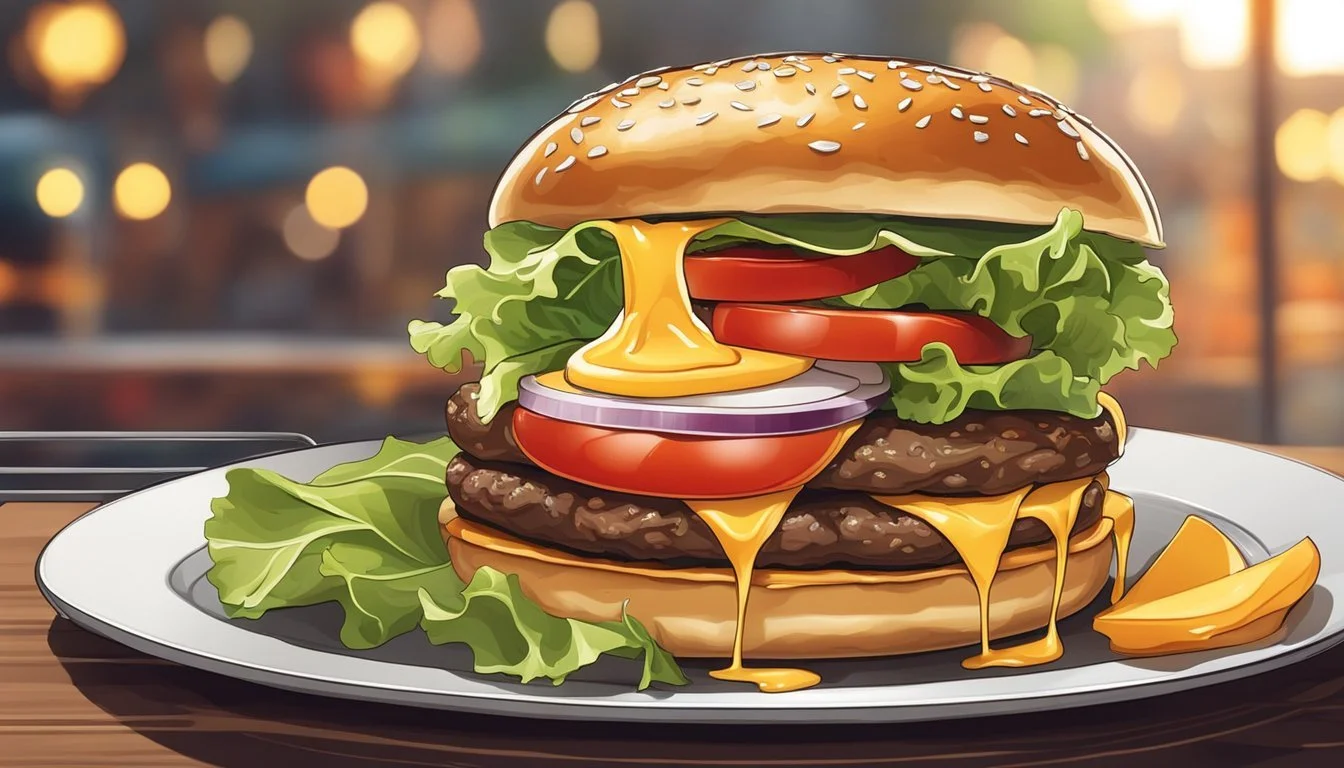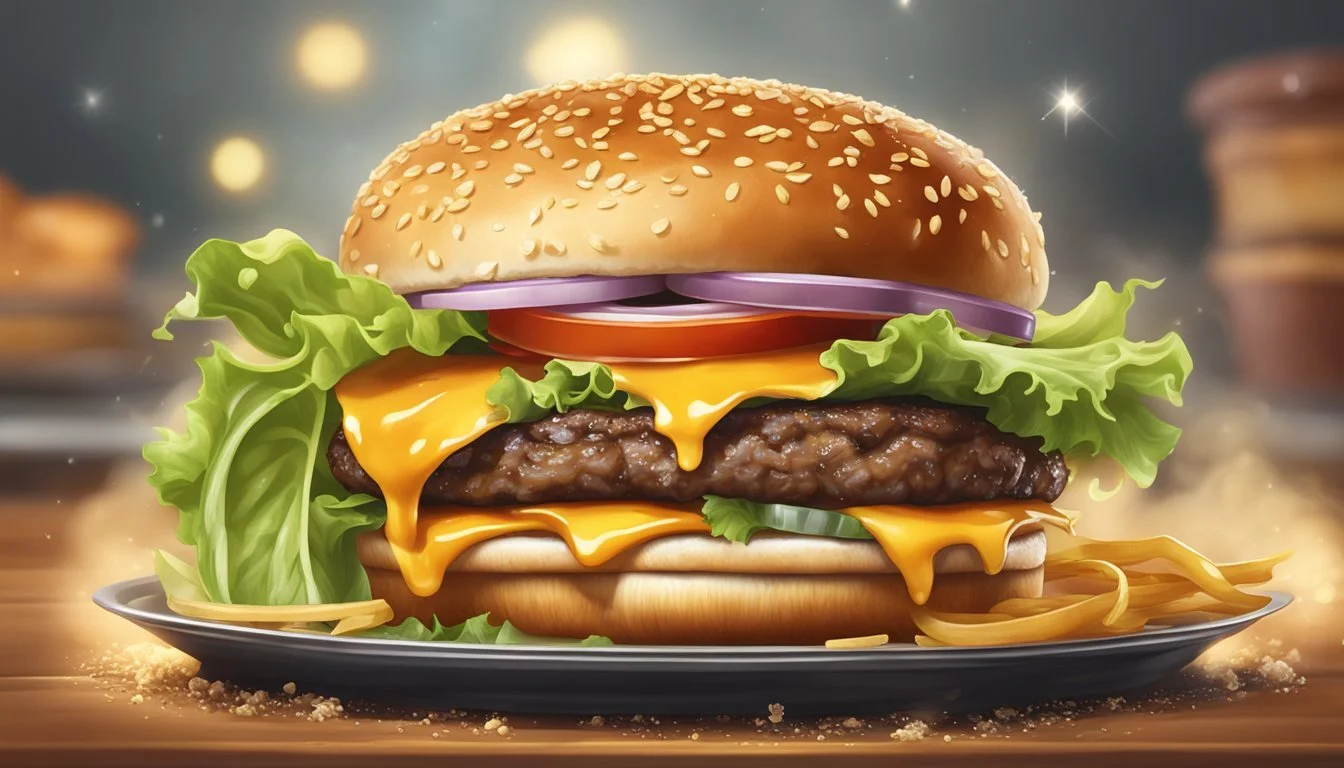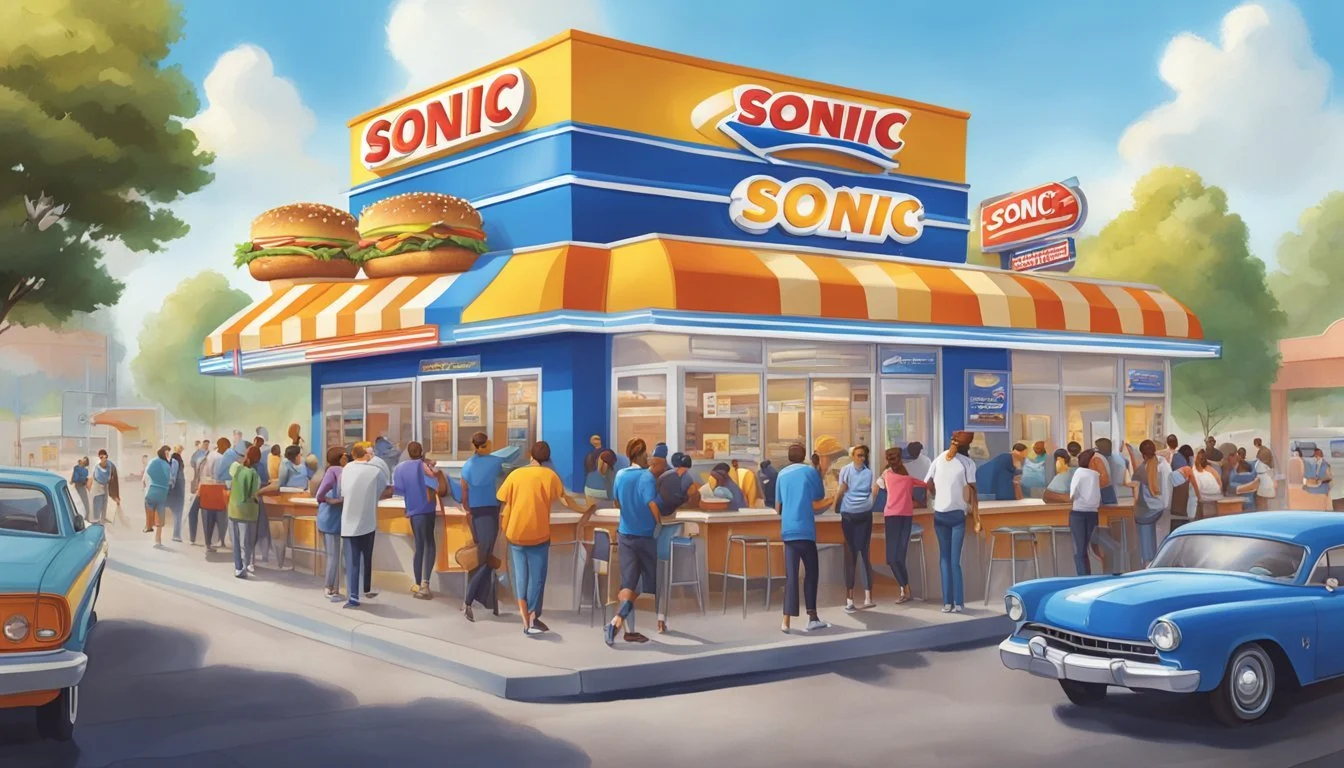Sonic Drive-In vs White Castle
A Comprehensive Comparison of Burger Empires
In the sprawling landscape of fast food, the quest for the perfect burger remains a contentious battle. Among the competitors, two chains stand out: Sonic Drive-In and White Castle, both with distinct histories and offerings. Sonic, known for its drive-in concept and varied menu, brings the charm of old-school dining with servers on roller skates right to the customer's car window. Meanwhile, White Castle holds the title of the pioneer of the fast food industry, recognized for introducing the iconic slider—a small, square hamburger that has become a staple in American fast food culture.
The burger offerings from these establishments couldn't be more different. Sonic Drive-In boasts a classic fast food burger experience with a customizable menu that allows patrons to tailor their burger with various toppings and condiments. White Castle's approach is minimalist yet iconic, with burgers that are smaller in size but pack a unique flavor partly due to their steamed cooking method. These contrasting philosophies in burger creation set the stage for a showdown between quality, taste, and dining experience.
Sonic's menu versatility and the nostalgia of drive-in dining appeal to those seeking a more personalized meal and atmospheric experience, while White Castle's commitment to simplicity and a straightforward menu resonates with those looking for a quick, familiar, and wallet-friendly option. The debate over which burger joint is superior isn't just about the taste—it also encompasses the entirety of what fast food enthusiasts value, from the convenience of service to the ambience of the eatery.
History and Brand Evolution
The histories of Sonic Drive-In and White Castle detail the remarkable journeys of two of America's pioneering fast-food chains. Both have made significant contributions to the landscape of American fast food, particularly in the realm of the ubiquitous hamburger.
Origins of Sonic Drive-In
Sonic Drive-In, known simply as Sonic, was founded in 1953, marking its position as a significant player in the fast-food domain. Unlike typical fast-food outlets, Sonic maintained a unique drive-in format, allowing customers to order and consume meals without leaving the comfort of their vehicles. Over the years, Sonic expanded to over 3,600 locations across the United States. The brand not only extended its reach but continuously redefined its identity through evolving logos and branding efforts reflecting its dynamic nature and growth.
The Rise of White Castle
In contrast, White Castle has been credited with being the country's first fast-food burger chain, paving the way for the modern fast-food industry. Established in 1921 with only $700 of startup capital, White Castle's innovation was the introduction of the slider, a small-sized hamburger that became a defining product of the brand. White Castle's impact on fast-food franchising and standardizing operations is a benchmark in the history of American hamburgers.
Each establishment showcases a distinctive narrative of brand evolution and expansion, shaping the landscape of American fast food and leaving an enduring imprint on America's culinary culture.
Menu Comparison
In the landscape of fast food dining, Sonic Drive-In and White Castle offer contrasting yet uniquely appealing experiences. Each restaurant has distinct flagship items that have secured their place in the hearts of burger aficionados.
Sonic's Signature Items
Sonic Drive-In is known for its extensive menu that features a variety of cheeseburgers. The Sonic Cheeseburger sits among their most sought-after items, traditionally coming with a single beef patty, creamy American cheese, ripe tomatoes, crunchy lettuce, and tangy pickles. Patrons can customize their burgers with different toppings such as mayonnaise, mustard, and ketchup, or elevate the experience with a Bacon Cheeseburger to satisfy a more indulgent craving.
Ingredients: Beef, American cheese, tomatoes, lettuce, pickles
Condiments: Mayonnaise, mustard, ketchup (others available upon request)
Calorie Focus: Sonic's basic cheeseburger contains calories and sodium amounts consistent with fast food expectations.
White Castle's Iconic Sliders
White Castle takes a different approach, specializing in sliders—smaller burgers that are easy to eat on the go. The classic White Castle Slider is a compact delight consisting of a steam-grilled beef patty with onions and a slice of pickles, all enclosed in a soft bun with a slice of American cheese. A signature aspect is their method of burger preparation, where the beef cooks atop a bed of onions, infusing the patty with flavor.
Ingredients: Steam-grilled beef patty, American cheese, pickles, onions
Unique Feature: Sliders are cooked on a bed of onions for enhanced flavor.
Portion Consideration: Sliders are lower in calories per item but are often consumed in greater quantities.
Nutritional Value
When comparing Sonic Drive-In and White Castle, one must consider the nutritional value of their offerings, especially in terms of calorie content and the balance of macronutrients and micronutrients in their burgers.
Calorie Content Analysis
Sonic Drive-In is known for its Supersonic Bacon Double Cheeseburger, which packs a significant caloric punch at approximately 1,140 calories per serving, largely due to the inclusion of bacon, cheese, and condiments. On the other hand, White Castle's notable offering, the Cheese Slider, is less calorie-dense, containing around 170 calories.
Given these figures, those counting calories may lean towards White Castle for a lighter option, while individuals seeking a more substantial meal may prefer Sonic's hearty burgers. However, it is crucial to factor in the full meal, including any additional sides and drinks, to understand the total caloric intake.
Understanding Macros and Micronutrients
Breaking down the macro- and micronutrient profiles of each chain's burgers, it is evident that differences exist not only in calorie numbers but also in what makes up those calories.
Protein: Protein is essential for muscle repair and growth. Sonic's Supersonic Bacon Double Cheeseburger contains a significant amount of protein, but it is accompanied by higher fat, especially saturated, from the bacon and cheese.
Carbs: The carbohydrates primarily come from the burger buns. White Castle's sliders have a lower carb count given their smaller size, while Sonic's options tend to be higher due to larger portions.
Fat: While fat is an important macronutrient, the type matters. The presence of cheese and bacon increases the saturated fat content in burgers, with Sonic's offerings generally being higher in fat.
Sodium: Fast food is often associated with high sodium levels, which can impact blood pressure and heart health. Both Sonic and White Castle have items with significant sodium, especially in cheese and bacon-enhanced burgers.
Fiber: Vegetables like lettuce and tomato add fiber and micronutrients to burgers. White Castle's simpler sliders may have less, while Sonic's larger burgers have the potential to include more vegetables, albeit still in minimal amounts.
It is apparent that choosing a burger based on nutritional value involves a careful consideration of both the calorie content and the balance between proteins, carbohydrates, fats, as well as sodium and fiber. Consumers must weigh their dietary needs and preferences when deciding between the fast-food offerings of Sonic Drive-In and White Castle.
Customer Experience
When comparing Sonic Drive-In and White Castle, customer experience plays a pivotal role, as it encompasses the atmosphere, service, and unique service features offered by each establishment.
Atmosphere and Service at Sonic Drive-In
Sonic Drive-In is well-known for its drive-in concept where customers can enjoy meals delivered to their cars, encapsulating a unique blend of convenience and nostalgia. Service at Sonic is characterized by its carhops, some of whom may even deliver orders on roller skates, adding a fun, vintage twist to the fast food dining experience. Customers have the liberty to place their orders through an intercom from the comfort of their vehicle, and they can opt for outdoor seating as well.
Drive-Through Window: Sonic also offers a traditional drive-through service for those on the go.
Customer Service: Employees are generally trained to ensure a friendly and efficient interaction, striving to provide a memorable experience.
White Castle's Dining and Service Features
White Castle, credited with being the first fast-food hamburger chain, offers a different dining experience, focusing primarily on its small, square hamburgers affectionately known as "sliders." The interior of White Castle restaurants tend to have a simple, clean design aimed at efficient service and convenience.
Dining: The service is typically fast, aligning with the chain’s fast food identity, making it a go-to for customers seeking quick service.
Customer Service: White Castle's service is straightforward, with emphasis on speed and accuracy of orders, and like Sonic, it includes a drive-through window to cater to customers in a hurry.
Price and Value for Money
When considering the value for money at Sonic Drive-In and White Castle, price and available promotions are two key factors.
Cost Comparison of Popular Items
Sonic Drive-In offers a range of fast-food items with prices considered average to slightly above average within the industry. According to recent data:
Sonic Cheeseburger: $3.89
Tots or Fries (Medium): $2.19
Cherry Limeade (Medium): $2.39
White Castle is known for its signature sliders. Prices for comparison:
Original Slider with Cheese: $0.72
Small French Fries: $1.89
Small Soft Drink: $1.59
Prices may vary by location and do not include taxes or regional price differences.
Deals and Promotions
Both fast-food chains frequently offer limited-time deals and promotions to enhance value:
Sonic Drive-In: 2 for $4 iced coffees and other mix-and-match deals.
White Castle: Combo offerings like Castle Combo #1 at $7.18, which includes 4 Cheesy Sliders, fries, and a drink.
These promotions can significantly lower the cost per item and offer a good bargain on the menu’s favorites, especially during special promotions or happy hour times.
Cultural Impact
The rivalry between Sonic Drive-In and White Castle extends beyond their menus; it touches deep cultural roots within the American fast food landscape. Each has played a distinct role in shaping the fast food culture of America, contributing in unique ways to national traditions such as National Cheeseburger Day.
Sonic's Role in American Fast Food Culture
Sonic Drive-In has carved its niche in the fast food industry by creating a unique dining experience reminiscent of the classic American drive-in. This model capitalizes on the American love for cars and convenience, allowing customers to order and dine without leaving the comfort of their vehicle. Sonic contributes to fast food culture with its extensive menu that offers a variety of items, catering to different tastes across America. The brand's impact is evident in how it blends a retro feel with modern fast food expectations, contributing to America's diverse culinary narrative.
White Castle's Influence on Burger Popularity
White Castle stands as a pioneer in the fast food industry, known for introducing the concept of the slider—the small-sized hamburger that has since become a fast food staple. This innovation played a crucial role in popularizing burgers across the United States, thereby solidifying burgers as a quintessential American food item. On occasions such as National Cheeseburger Day, White Castle's legacy is celebrated as they continue to serve millions of Americans who resonate with the brand's history and influence on American burger culture. Their model paved the way for the modern American fast food industry and influenced the establishment of numerous other burger-centric fast food chains.
Conclusion
When comparing Sonic Drive-In and White Castle, customers have distinct experiences and offerings to consider. Sonic offers a variety of menu items and prides itself on customization possibilities, with a range of toppings and condiments to tailor each hamburger to individual tastes. Their drive-in model also adds a unique retro charm that differentiates it from other fast-food options.
On the other hand, White Castle is famous for its signature sliders. These small, square hamburgers are a cult favorite, particularly because of their distinct flavor and the convenience of being able to order in larger quantities. White Castle's approach to fast-food hamburgers focuses on a simple, steam-grilled method and is a staple in the late-night food scene.
Menu Variety: Sonic has a broader selection, offering more than just hamburgers.
Customization: Sonic allows extensive customization of their hamburgers.
Service Model: Sonic features a drive-in experience.
Signature Style: White Castle is known for its unique sliders.
Cult Following: White Castle has a dedicated fan base that swears by its sliders.
The choice between Sonic and White Castle may ultimately come down to personal preference. Those who favor a classic drive-in experience and a broader menu might lean towards Sonic, while those who appreciate the iconic, small-format burgers might prefer White Castle. Both have made their mark in the fast-food industry, catering to different tastes and experiences.







